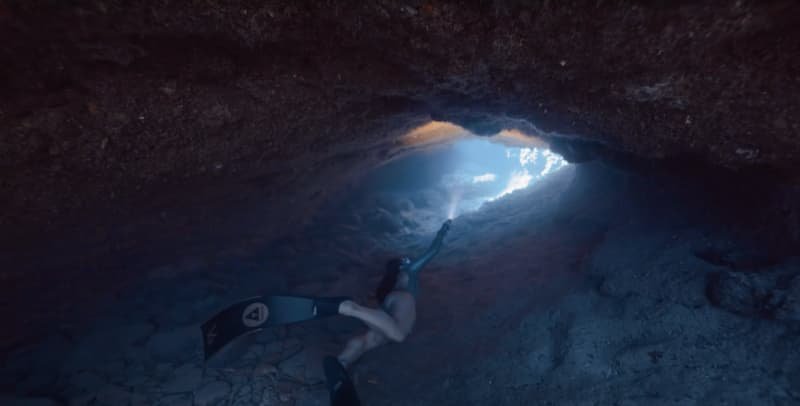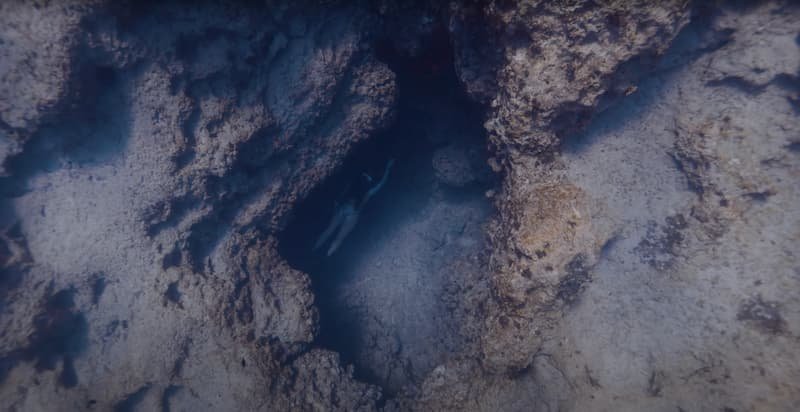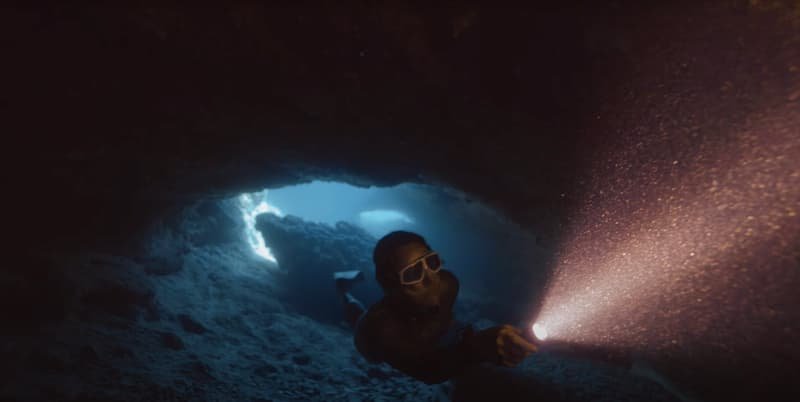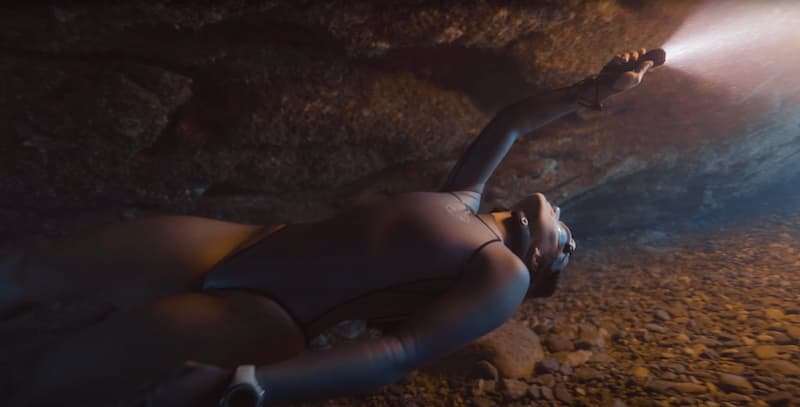
 Nick Pelios
Freediver, Creator
Nick Pelios
Freediver, Creator

 Nick Pelios
Freediver, Creator
Nick Pelios
Freediver, Creator
Unveiling the enigmatic beauty concealed beneath the Earth's surface, freediving in caves offers a thrilling adventure for daring underwater explorers. Combining the art of breath-holding with the complexities of navigating submerged cave systems, this extreme sport pushes the limits of human capabilities. Let's delve into the world of cave diving, examining the equipment required, the training and experience needed, the inherent risks involved, the safety protocols employed, the allure of exploration, and the vital importance of environmental conservation.
Cave diving demands specialized equipment to ensure the safety and effectiveness of divers. A standard kit includes a mask, fins, wetsuit or drysuit, weight belt, dive computer, dive light, and a reel or line. Masks with low volume are preferred to reduce air consumption, while fins with efficient propulsion aid in maneuvering through tight spaces. Proper exposure protection, such as wetsuits or drysuits, ensures thermal comfort in often chilly cave waters. Weight belts enable divers to achieve optimal buoyancy control, while dive computers help monitor dive parameters and prevent decompression sickness. Essential dive lights illuminate the dark passages, revealing hidden wonders and ensuring a safe return. Lastly, a reel or line acts as a lifeline, guiding divers through the labyrinthine caves and providing a clear path back to the entrance.

Freediving in caves necessitates comprehensive training and substantial experience due to the unique challenges posed by these environments. Aspiring cave divers must undergo specialized cave diving courses to acquire the necessary skills, knowledge, and safety protocols. These courses cover topics such as navigation, communication techniques, buoyancy control and emergency procedures. By simulating real cave scenarios in controlled environments, divers gain valuable experience in managing potential risks. Mentored dives under the guidance of experienced cave divers are crucial to refine skills and build confidence. Practical experience enables divers to develop crucial decision-making abilities, adapt to changing conditions, and enhance situational awareness. This training and experience also foster a deep understanding of the fragility of cave ecosystems and the importance of responsible diving practices.

Cave diving presents inherent hazards and risks that demand the utmost respect and preparation. Navigating through low visibility environments, divers must contend with the absence of natural light, restricting their visual range. Narrow passages can pose challenges, requiring divers to maintain streamlined positions and employ proper fin techniques to avoid entanglement with lines or equipment. Siltouts, clouds of disturbed sediment, can reduce visibility to zero, leaving divers disoriented and vulnerable. Avoiding excessive fin kicks or hand movements is essential to prevent siltouts and preserve the visibility within the cave. Loss of visibility may lead to disorientation or the inability to locate the guideline, potentially resulting in a dangerous situation. Getting lost in the intricate cave systems is a significant risk, emphasizing the importance of maintaining constant contact with the guideline. Divers are trained to react calmly and follow established protocols to retrace their path and find their way back to the entrance. Disorientation in the absence of a guideline can be a harrowing experience, highlighting the necessity of proper training and preparation.

Safety is paramount in cave diving, and divers strictly adhere to established protocols to mitigate risks. Cave divers utilize guidelines or lines to mark their route, ensuring a clear path for both forward and backward navigation. These lines serve as lifelines, providing orientation and a means of returning to the entrance. Divers are trained to run their fingers along the guideline, maintaining constant contact to avoid separation or disorientation. Buoyancy control is crucial for cave divers to minimize disturbances to the environment and prevent accidental contact with fragile formations. Neutral buoyancy techniques allow divers to move effortlessly through the water, reducing the risk of dislodging sediments or damaging delicate cave structures. Communication plays a vital role in cave diving, despite limited verbal interaction due to the use of hand signals. Divers rely on a standardized set of signals to convey important messages, ensuring effective communication between buddies or dive team members. These signals encompass safety-related messages, emergency situations, and directional instructions.

The allure of exploring hidden cave systems beneath the Earth's surface attracts adventurers seeking the thrill of the unknown. Cave divers embark on journeys to discover uncharted territories, documenting their dives through photography, videography, or cave mapping. The sense of accomplishment that accompanies the exploration of these submerged caverns is unparalleled, fueling the passion of cave divers worldwide.
Cave ecosystems are fragile and susceptible to disturbances. Cave divers are advocates for environmental preservation and prioritize responsible diving practices. They adhere to guidelines to minimize their impact, such as refraining from touching or damaging cave formations, avoiding siltouts, and respecting local regulations. The conservation of cave systems ensures their longevity and preserves these extraordinary environments for future generations.

Freediving in caves represents the pinnacle of underwater exploration, blending the challenges of breath-holding with the complexity of navigating submerged caverns. It demands specialized equipment, extensive training, and respect for the inherent risks. Through strict adherence to safety protocols, cave divers venture into the darkness, uncovering the hidden wonders of these subterranean realms. The camaraderie within the cave diving community and their dedication to environmental conservation ensure the responsible exploration of these fragile ecosystems. Freediving in caves remains an exhilarating and awe-inspiring endeavor for those who dare to embrace the depths.